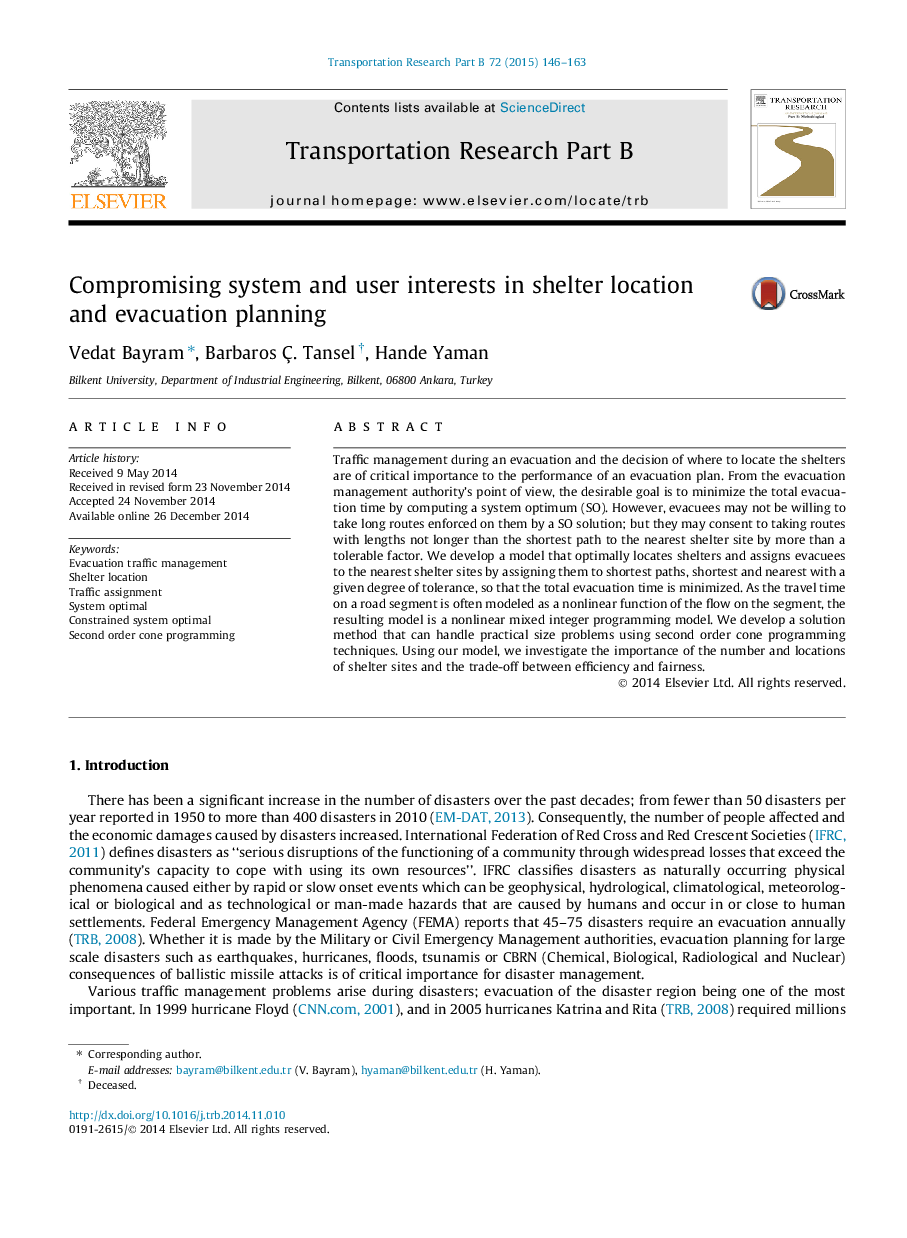| Article ID | Journal | Published Year | Pages | File Type |
|---|---|---|---|---|
| 1132035 | Transportation Research Part B: Methodological | 2015 | 18 Pages |
•We combine shelter location decisions with evacuation traffic assignment.•Our model combines the point-views of the evacuation authority and the evacuees.•We employ second order conic programming and solve real size problems exactly.•We present a sensitivity analysis comparing our model to other approaches.•We analyze the impact of having capacitated shelters on performance measures.
Traffic management during an evacuation and the decision of where to locate the shelters are of critical importance to the performance of an evacuation plan. From the evacuation management authority’s point of view, the desirable goal is to minimize the total evacuation time by computing a system optimum (SO). However, evacuees may not be willing to take long routes enforced on them by a SO solution; but they may consent to taking routes with lengths not longer than the shortest path to the nearest shelter site by more than a tolerable factor. We develop a model that optimally locates shelters and assigns evacuees to the nearest shelter sites by assigning them to shortest paths, shortest and nearest with a given degree of tolerance, so that the total evacuation time is minimized. As the travel time on a road segment is often modeled as a nonlinear function of the flow on the segment, the resulting model is a nonlinear mixed integer programming model. We develop a solution method that can handle practical size problems using second order cone programming techniques. Using our model, we investigate the importance of the number and locations of shelter sites and the trade-off between efficiency and fairness.
